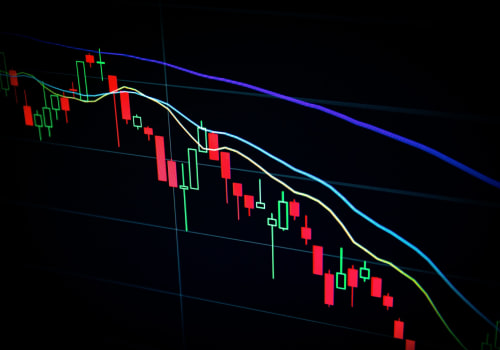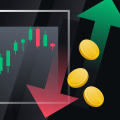Momentum strategies in binary options trading have become increasingly popular among traders due to their potential for profits. In simple terms, momentum trading involves buying and selling based on the current momentum of a particular asset or currency pair. By taking advantage of the short-term price movements of an asset, momentum traders can potentially make significant profits. But before you dive into momentum trading, it is important to understand the basics of how it works.
This article will give you an overview of momentum strategies in binary options trading, and provide some examples so that you can begin using them in your own trading. Momentum strategies can be a great way to make money trading binary options. There are several types of momentum strategies that traders can use, including trend following, mean reversion, and breakout trading. Each type of strategy has its own advantages and disadvantages, so it's important to understand how each works before deciding which one is best for you. In trend following, traders look for an asset's price to continue moving in its current direction. This means they will try to buy when prices are rising, and sell when prices are falling.
A trend following strategy can be very effective when prices are trending strongly, as it allows traders to capture the majority of the move. However, it can also be risky since it doesn't take into account any changes in the underlying trend. Mean reversion strategies involve looking for an asset's price to move back towards its average price over a certain period of time. This type of strategy works best when there is a lot of volatility in the markets, as it allows traders to capitalize on the swings in prices. However, mean reversion strategies can also be risky if the markets don't revert back to their average price. Breakout trading involves looking for an asset's price to break out of its current range.
This type of strategy works best when there is a lot of volatility in the markets, as it allows traders to capitalize on sudden moves. However, it can also be risky since there is no guarantee that the price will break out. To identify momentum in the markets, traders often use technical indicators such as the moving average convergence/divergence (MACD) or the relative strength index (RSI). These indicators measure the momentum of a market and can help traders identify potential trading opportunities. For example, if the MACD shows that an asset's price is moving up or down rapidly, it could indicate that there is a strong trend in place. When entering and exiting trades using a momentum strategy, it's important to consider both the risk and reward potential.
For example, if an asset is trending strongly, traders may want to enter a long position with a tight stop-loss order to minimize their risk. On the other hand, if an asset is in a volatile period, traders may want to use wider stop-loss orders to give themselves more room for error. It's also possible to combine different momentum strategies to create a comprehensive approach to trading. For example, traders could use trend following strategies for longer-term trades and mean reversion strategies for shorter-term trades. This approach can help traders capture more gains from the market without taking on too much risk. Finally, risk management is an important part of using any momentum strategy.
Traders should always use appropriate position sizes and set stop-loss and take-profit orders to ensure they don't suffer large losses. By managing their risk properly, traders can maximize their chances of success when using momentum strategies.
Mean Reversion
Mean reversion is a trading strategy used by traders to capitalize on short-term market movements. The idea behind mean reversion is that prices and other economic indicators tend to revert back to their mean or average over time. Therefore, when prices move away from their average, it presents an opportunity for traders to take advantage of the market's tendency to revert back to the mean. One way to identify mean reversion in the markets is by using technical indicators like Bollinger Bands.Bollinger Bands are lines that are plotted two standard deviations away from a moving average of a security's price. When the price of a security moves outside of the bands, it often indicates that the price has moved too far away from its average and is likely to revert back to the mean. Similarly, support and resistance levels can also be used to identify potential mean reversion opportunities. When trading using mean reversion, it is important to know how to enter and exit trades. Traders should look for setups where the price has moved away from its average and is likely to return.
Once the setup is identified, traders should enter a position in the direction of the mean reversion. To manage risk, traders should place a stop-loss order below the setup level in case the trade goes against them. Similarly, they should also place a take-profit order near the average price to lock in profits when the trade goes in their favor. Overall, mean reversion is an effective strategy for trading binary options. By taking advantage of the markets tendency to revert back towards its mean, traders can increase their chances of success and generate profits more consistently.
Trend Following
Trend following is one of the most popular strategies used in binary options trading. This strategy involves buying or selling binary options contracts based on the direction of the underlying asset’s price trend. In order to successfully employ this strategy, traders must be able to identify and follow trends in the markets, such as using trendlines or support and resistance levels. To identify trends in the markets, traders can use technical analysis tools such as trendlines or support and resistance levels.Trendlines are lines drawn on a chart to show the overall direction of a market’s price over a given period of time. Support and resistance levels are points on a chart where the price is likely to find support or resistance. Once an appropriate trend has been identified, traders can enter and exit trades when using trend following. When entering a trade, traders should set a stop-loss order to limit any losses they may incur, as well as a take-profit order to ensure that they maximize any profits made from the trade.
For example, if a trader is buying a call option, they should set their stop-loss order below the current market price and their take-profit order above the current market price. In conclusion, trend following is an effective strategy for trading binary options. By correctly identifying and following trends in the markets, traders can increase their chances of success when trading binary options. Additionally, by setting stop-loss and take-profit orders when entering trades, traders can protect themselves against any unexpected losses or gains.
Breakout Trading
Breakout trading is a strategy used in binary options trading that involves taking advantage of sudden increases or decreases in the price of an asset.Traders will enter a trade when the asset breaks out of a certain price range, with the expectation that the asset will continue to move in the same direction as the breakout. Breakout trading can be a profitable way to trade binary options, but it is important to have a good understanding of how to identify breakouts and enter trades. One way to identify breakouts is by using technical indicators such as the Moving Average Convergence/Divergence (MACD) or the Relative Strength Index (RSI). These indicators measure momentum in the markets, which can help traders determine when an asset is likely to break out. When these indicators show a strong trend, it can be an indication that the asset is about to break out of its current range. When entering a trade using breakout trading, it is important to set a stop-loss and take-profit order.
A stop-loss order will automatically close the trade if the asset moves against your position, while a take-profit order will close the trade when the asset reaches a certain price level. For example, if you enter a long position when the asset breaks out of a range, you can set a stop-loss order at the lower end of the range and a take-profit order at the upper end of the range. This will help you protect your profits and limit your losses. In conclusion, breakout trading is an effective strategy for trading binary options. Knowing how to identify breakouts and setting stop-loss and take-profit orders can help traders increase their chances of success.
With practice, traders can become more adept at recognizing breakouts and entering profitable trades. When it comes to trading binary options, momentum strategies can be a great way to increase your chances of success. Trend Following, Mean Reversion, and Breakout Trading are all examples of momentum strategies that can be used in the right market conditions. While each strategy has its own advantages and disadvantages, risk management should be at the forefront of any strategy, as risk can quickly outweigh rewards when proper precautions are not taken. Combining different strategies into a comprehensive approach can also be a great way to maximize profits.






